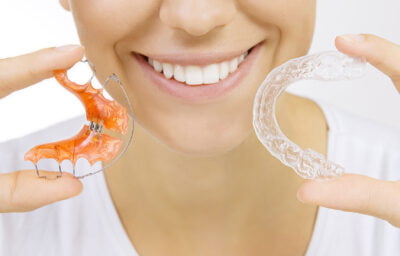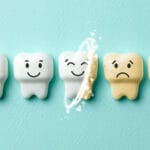 The day you’ve been waiting for has almost arrived: That’s right, your braces are coming off! Soon you’ll be able to eat what you want and run your tongue over those smooth, clean, well-adjusted teeth.
The day you’ve been waiting for has almost arrived: That’s right, your braces are coming off! Soon you’ll be able to eat what you want and run your tongue over those smooth, clean, well-adjusted teeth.
But although one stage of your orthodontic treatment is ending, another is about to begin: retention. Why is retention needed, and what exactly is involved?
What Is Retention?
Retention is the critical stage of orthodontic treatment that follows removal of your braces. It typically involves use of a removable, custom-made appliance called a retainer. Now that the braces have been removed, the retainer prevents your teeth from shifting back into their old position.
Your teeth are held in place by a network of fibers known as the periodontal ligaments. It can take many months, or even longer, for the periodontal ligaments to adjust to the proper position. The retainer helps this process along, so that the time and money you invested doesn’t end up going to waste.
Typically, we’ll fit you for your new retainer on the same day we remove your braces.
Types of Retainers
At the Yuba City Dentistry Group, we use three basic types of retainers. They are:
- “Hawley”: The simplest of the three retainer types, the Hawley is a thin, tongue shaped piece of acrylic that is molded to fit your mouth. A wire holds your teeth in the proper position. Hawley retainers are simple, durable, and usually adjustable.
Available in different colors and designs, they can even be personalized for younger patients. - Clear aligner: Made of thin, transparent plastic, the clear aligner looks similar to the Invisalign® tray system. It’s designed to fit precisely over your teeth to keep them in place.
Clear aligners prove very popular because they are easy to remove and less noticeable than Hawleys, but they are also less durable. If you grind your teeth, the clear aligner may not be the proper choice. - Fixed retainer: This type of retainer uses a wire that runs across the back side of teeth, usually bonded in place with dental cement. Since the retainer is fixed, it will remain in place for many months or longer and should only be removed by a professional.
Since they are always at work, fixed retainers typically produce the best outcomes.
Maintenance
You’ll need to care for your retainer properly to help it last, which includes regular cleaning. However, different retainers require different cleaning methods. For example, you can gently brush Hawley retainers with a normal toothbrush. But don’t brush a clear aligner, as you may scratch or damage the surface. Your dentist will provide you with instructions specific to your retainer.
It’s important not to expose a retainer to excess heat (such as washing it in very hot water or leaving it near a heater or fire), as this could warp the retainer and ruin it. It’s also a good idea to keep your retainer in a proper case when it’s not in use.
Follow these basic tips – along with the suggestions of the dentist – and your retainer will help you keep the beautiful smile you worked so hard for.
Schedule a Braces Consultation



